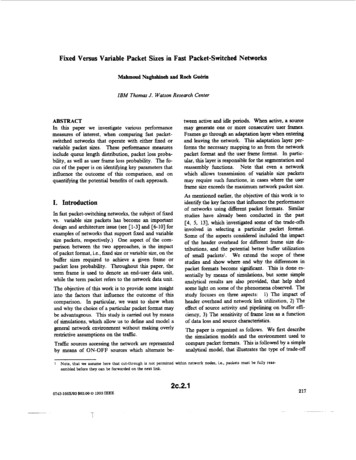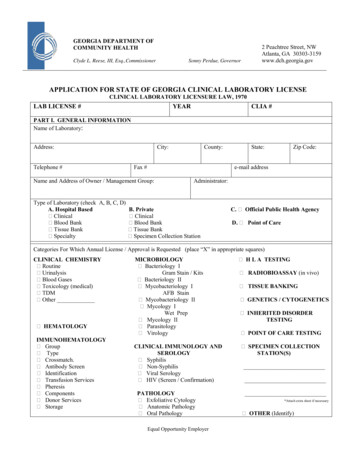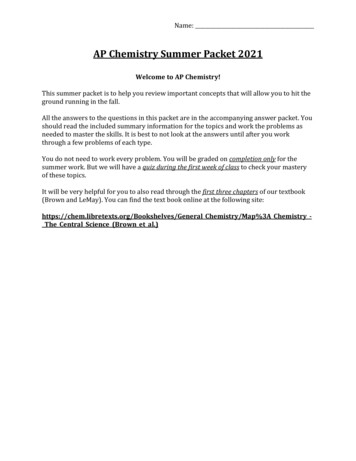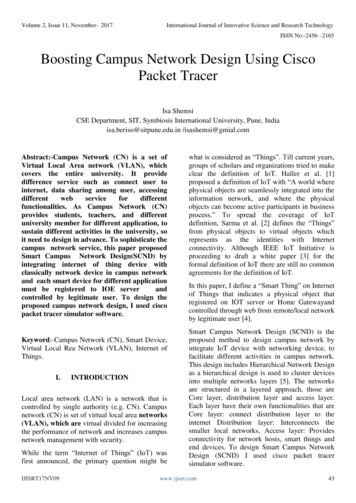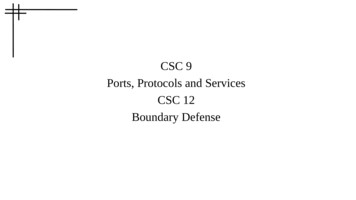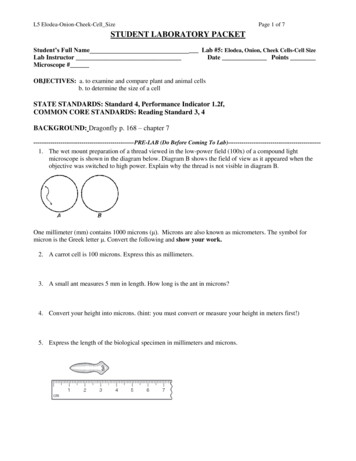
Transcription
L5 Elodea-Onion-Cheek-Cell SizePage 1 of 7STUDENT LABORATORY PACKETStudent’s Full Name Lab #5: Elodea, Onion, Cheek Cells-Cell SizeLab InstructorDate PointsMicroscope #OBJECTIVES: a. to examine and compare plant and animal cellsb. to determine the size of a cellSTATE STANDARDS: Standard 4, Performance Indicator 1.2f,COMMON CORE STANDARDS: Reading Standard 3, 4BACKGROUND: Dragonfly p. 168 – chapter ---PRE-LAB (Do Before Coming To --1. The wet mount preparation of a thread viewed in the low-power field (100x) of a compound lightmicroscope is shown in the diagram below. Diagram B shows the field of view as it appeared when theobjective was switched to high power. Explain why the thread is not visible in diagram B.One millimeter (mm) contains 1000 microns (μ). Microns are also known as micrometers. The symbol formicron is the Greek letter μ. Convert the following and show your work.2. A carrot cell is 100 microns. Express this as millimeters.3. A small ant measures 5 mm in length. How long is the ant in microns?4. Convert your height into microns. (hint: you must convert or measure your height in meters first!)5. Express the length of the biological specimen in millimeters and microns.
L5 Elodea-Onion-Cheek-Cell SizePage 2 of -----Lab -----------MATERIALS: Microscope, lens paper, slides, cover slips, water dropper bottle, scissors, tweezers, Elodea(Egeria naja may be substituted for Elodea), onion, prepared cheek epithelial slides, Lugol’siodine, clear metric ruler slidePROCEDURES AND OBSERVATIONS:Determining the Field Diameter:1. Determine the diameter of the field of vision using the metric ruler slide provided under low power(yellow, 10x objective). Move the metric ruler slide until it is centered, forming a diameter in the circle2. Estimate the field diameter by noting the number of millimeter lines in view. The space between a pairof black dashes is one millimeter. What is the diameter of the field of vision in millimeters? Convert tomicrons and record both below:Diameter in millimeters (mm)Diameter in micrometers (µm)Cheek Cells:1. Obtain a slide of cheek cell epidermis.2. Focus the cheek cells under low power. Then switch to high power.3. Observe the cheek cells under high power. Draw 2-3 of them and label thecell membrane, cytoplasm and nucleus.Cheek Cell Size:1. Focus the cheek cells back to low power.2. Count the number of cheek cells that fit across the field of view, as if theywere lined up next to each other side by side. Note that the cheek cells areCheek (400x)more round than rectangular, so you only need to count them in onedimension. Because it is difficult to find a slide with cells across the entire field of view, you may haveto estimate how many cells will fit across by looking at a few different fields of view.3. Record your data below.4. Calculate the average size of a cheek cell using the field diameter that you measured above.Number of cells that fit across field of viewAverage size of a cheek cell in mmAverage size of a cheek cell in micronsElodea:1. Clean a glass slide and cover slip.2. Remove a small green leaf from near the tip of an Elodea plant.3. Prepare a wet mount of the elodea leaf with distilled water by placing the flatleaf on a glass slide (You may be able to make the slide without adding adrop of water because the Elodea is already wet).4. Place one side of a coverslip onto the drop of water at a 45 degree angle andgently lower the coverslip onto the drop. If water runs out from the edges ofthe coverslip, you may have added too much water. If there is an air spaceunder the coverslip, you may have not added enough water, or you may haveElodea (400x)
L5 Elodea-Onion-Cheek-Cell SizePage 3 of 7placed the coverslip on the slide improperly. You may want to use a piece of paper towel to soak upextra water, or add a drop of water to the edge of thecoverslip. You can also gently tap the coverslip with a pencil tip to drive some air bubbles out.5. Observe the leaf under low power. Then switch to high power.6. Locate the chloroplasts (oval green bodies) and try to find a cell where you can observe cyclosis,streaming of the cytoplasm. You should be able to see the chloroplasts move in a circular pattern. Thisshows that the cytoplasm is fluid and the organelles move within it.7. Draw 2-3 adjacent cells (on previous page) and label the parts/organelles you observe. Be ggested Break Point--------------------------------------Onion Wet Mount:1. Get a clean glass slide and cover slip.2. Obtain a piece of onion.3. Use your fingers (nails work well) or forceps, to carefully peel offa small piece of skin from the inner or concave side of the onionchunk. This piece should be thin and translucent; looking muchlike a piece of scotch tape.4. To prepare a wet mount of the onion with distilled water, lay theonion skin flat on a glass slide. Make sure the skin doesn’t fold over on itself (this can be tricky).5. Add one or two drops of water from the dropper bottle.6. Place one side of the coverslip onto the drop at a 45 degree angle and gently lower the coverslip onto thedrop. Using this procedure helps prevent air bubbles from being trapped under the coverslip.7. If water runs out from the edges of the coverslip, you may have added too much water. If there is an airspace under the coverslip, you may have not added enough water, or you may have placed the coverslipon the slide improperly. You may want to use a piece of paper towel to soak up extra water, or add adrop of water to the edge of the coverslip. You can also gently tap the coverslip with a pencil tip to drivesome air bubbles out.8. Observe the onion under low power. Then switch to high power. Do not yet draw the onion.Stain the onion cells using the Draw-Through method:1. Swing the low power objective into place, but keep the cells infocus.2. Carefully place a drop of Lugol’s iodine at one edge of thecoverslip. Hold a small piece of paper toweling at the oppositeedge with a forceps to draw off the water and allow the iodine toseep through. Look at the picture on the right for help.3. Try to observe the stain advancing across the field of view.4. Allow 1-3min for the stain to seep across.5. Observe the onion cells under low power. Draw 2-3 adjacent cellsin the space below. Locate and label the nucleus, cell wall, cellmembrane.6. Switch to the high power objective. Use only the fine adjustment when focusing. Draw one onion cell.Locate and label the nucleus, cell wall, cell membrane and nucleolus.7. Save this slide.Onion (100x)Onion (400x)
L5 Elodea-Onion-Cheek-Cell SizePage 4 of 7Measuring Onion Cells:1. Examine your onion slide under low power. Align the slide such that the cells run lengthwise in astraight line. Count the number of cell lengthwise along where you think the diameter would be (thewidest part of the circle.) Record below.2. Count the number of cells that fit widthwise across the field. Record below.3. Estimate the average length and width of an onion cell in mm and then in microns. Record below. (Hint:In your calculations, use the diameter of the field of view determined above.)Number of cells that fit across field of viewLengthwiseWidthwiseAverage size of an onion cell in mmLengthWidthAverage size of an onion cell in micronsLengthWidthANALYSIS AND CONCLUSION:1. For each, provide the location and description as seen under the microscope. If a structure wasnot visible under the microscope (or is not present in a particular type of cell), place an “X” in thetable:OrganellesOnionElodeaCheek CellsCell wallCell membraneCytoplasmCentral vacuoleChloroplastNucleusNucleolus2. Complete the following chart – Comparison between elodea, onion cell and cheek cells based on yourknowledge of animal and plant cells.OrganellesCell wallCell membraneCytoplasmCentral vacuoleChloroplastNucleusNucleolusPresent in Onion (O)Present in Elodea (E)Present in Cheek (C)Function
L5 Elodea-Onion-Cheek-Cell SizePage 5 of 7Student Answer PacketStudent’s Full Name Lab #5: Elodea, Onion, Cheek Cells-Cell SizeLab InstructorDatePointsFINAL GRADEPre-LabCompleted as homework:Max. valueProcedure/Observations:Max. value1pt.4 pts.pt.pts.Field Diameter: What is the diameter of the field of vision in millimeters? Convert to microns and record bothbelow:Diameter in millimeters (mm)Diameter in micrometers (µm)Cheek Cells and Elodea: Draw 2-3 adjacent cells for each. Label the cell membrane, cytoplasm, and nucleus ofthe cheek cells. Label the parts/organelles of the elodea that you observe.Cheek (400x)Cheek Cell Size: What is the size of an average cheek cell? Fill in the table.Number of cells that fit across field of viewAverage size of an cheek cell in mmAverage size of an cheek cell in microns
L5 Elodea-Onion-Cheek-Cell SizePage 6 of 7Onion: Draw 2-3 adjacent cells under low power and label the nucleus, cell wall and cell membrane. Draw oneonion cell under high power and label the nucleus, cell wall, cell membrane and nucleolus.Onion (100x)Onion (400x)Onion Cell Size: How big is an average onion cell? Fill out the table.Number of cells that fit across field of viewLengthwiseWidthwiseAverage size of an onion cell in mmLengthWidthAverage size of an onion cell in micronsLengthWidthANALYSIS AND CONCLUSION:Max. value5 pts.pts.1. For each, provide the location and description as seen under the microscope. If a structure wasnot visible under the microscope (or is not present in a particular type of cell), place an “X” in thetable:OrganellesCell wallCell membraneCytoplasmCentral vacuoleChloroplastNucleusNucleolusOnionElodeaCheek Cells
L5 Elodea-Onion-Cheek-Cell SizePage 7 of 72. Complete the following chart – Comparison between elodea, onion cell and cheek cells based on yourknowledge of animal and plant cells.OrganellesPresent in Onion (O)Present in Elodea (E)Present in Cheek (C)FunctionCell wallCell membraneCytoplasmCentral vacuoleChloroplastNucleusNucleolusEXTRA CREDIT:Using the data from the lab,a) Calculate the average area of an onion skin cell,b) Draw a 1in. x 1 in square box below, thenc) Calculate how many onion cells would fit into it.(Hint: you can determine the area of an onion cell, and calculate the area of a 1 inch x 1 inch squarebox in microns) Show All Work!
Cheek Cells and Elodea: Draw 2-3 adjacent cells for each. Label the cell membrane, cytoplasm, and nucleus of the cheek cells. Label the parts/organelles of the elodea that you observe. Cheek Cell Size: What is the size of an average cheek cell? Fill in the table. Number of cells that fit across field of view _
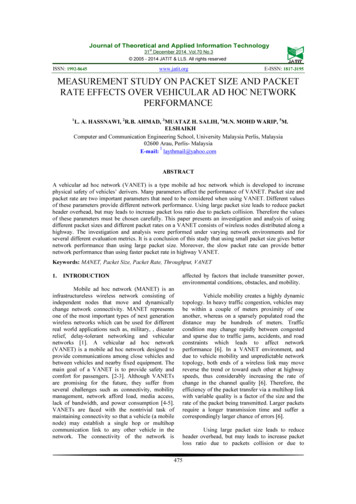

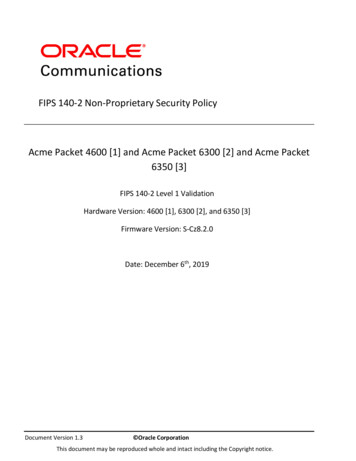
![FIPS 140-2 Non-Proprietary Security Policy Acme Packet 1100 [1] and .](/img/49/140sp3490-5601486.jpg)
